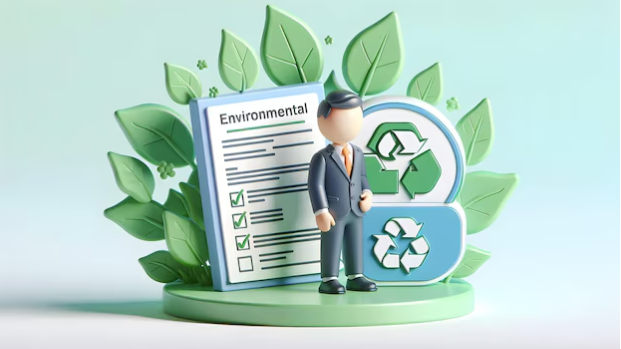How to Interpret an Environmental Product Declaration (EPD)
Environmental sustainability has become a significant focus in many industries as consumers and businesses seek to reduce their environmental footprint. A key tool in this effort is the Environmental Product Declaration (EPD). EPDs provide detailed information about the environmental impact of a product throughout its life cycle, helping businesses, consumers, and regulators make informed choices. However, interpreting an EPD can be complex, especially for those unfamiliar with environmental metrics and terminology.
What is an Environmental Product Declaration (EPD)?
An Environmental Product Declaration (EPD) is a standardized document that provides comprehensive data about the environmental impact of a product. It is developed using a Life Cycle Assessment (LCA) methodology and is verified by an independent third party. EPDs allow for the transparent and accurate communication of environmental information related to raw material acquisition, production processes, energy usage, and more. They are typically used in industries such as construction, manufacturing, and packaging, where sustainability is a growing concern. The goal of an EPD is to provide environmental information that can be compared between similar products, helping consumers, architects, engineers, and other stakeholders make sustainable choices. But how do you actually read and interpret the data in an EPD?
Why Understanding EPDs Matters
Interpreting an Environmental Product Declaration is essential for anyone involved in sustainability decision-making, whether in procurement, design, or regulatory compliance. With increasing pressure on businesses to reduce their environmental impact, understanding the information within an EPD is a powerful way to assess a product’s overall sustainability. In addition to helping reduce carbon footprints, EPDs are also crucial in achieving certifications like LEED or BREEAM, which are important for green building projects.
How to Interpret an Environmental Product Declaration
Understanding the EPD Structure
Most Environmental Product Declarations follow a similar format, often broken down into several key sections that you should familiarize yourself with:
- Product Description: This section provides a detailed explanation of what the product is, how it’s manufactured, and its primary uses. It may also include the product’s reference service life, which is important for comparing the environmental impacts of different products over time.
- Functional Unit: A functional unit is the baseline for the environmental performance of the product. For instance, for construction products, the functional unit could be 1 square meter of wall surface over a 50-year period. The functional unit allows for the environmental impacts of different products to be compared directly.
- Life Cycle Stages: EPDs break down the product’s environmental impact over its life cycle, from the extraction of raw materials through to manufacturing, transport, use, and disposal. This typically includes:
- A1-A3 (Product Stage): This includes the extraction of raw materials, energy, and manufacturing processes.
- A4-A5 (Construction Process Stage): This includes transportation of the product to the site and installation.
- B (Use Stage): This covers the impact during the product’s operational life, including maintenance and repair.
- C (End of Life): This refers to what happens to the product after its use, including recycling, disposal, and any environmental burdens at this stage.
- D (Benefits Beyond the System Boundaries): This is an optional section that might include recycling or re-use benefits after the product’s life cycle ends.
Understanding these stages is essential, as it allows you to see where a product has the most significant environmental impact.
Key Environmental Indicators in an EPD
An Environmental Product Declaration contains several key environmental indicators, each of which measures different aspects of a product’s environmental performance. The most common ones are:
- Global Warming Potential (GWP): Often referred to as carbon footprint, GWP measures the product’s contribution to climate change. It’s expressed in kilograms of CO2-equivalent emissions. Lower values indicate a smaller carbon footprint, which is better for the environment.
- Ozone Depletion Potential (ODP): This indicator measures the product’s impact on the ozone layer. It’s expressed in kilograms of CFC-11 equivalent emissions. Products with lower ODP values are preferable as they contribute less to ozone depletion.
- Acidification Potential (AP): AP measures the potential of a product to contribute to acid rain, which can harm ecosystems and buildings. It’s typically measured in kilograms of SO2 equivalents.
- Eutrophication Potential (EP): This metric measures the likelihood of the product contributing to nutrient pollution in water bodies, which can lead to the excessive growth of algae and harm aquatic life.
- Photochemical Ozone Creation Potential (POCP): POCP measures the product’s contribution to ground-level ozone formation, which can cause smog and respiratory problems.
These indicators allow you to compare different products based on specific environmental criteria. Products with lower values for GWP, ODP, AP, EP, and POCP are generally more environmentally friendly.
Comparing EPDs Between Products
One of the primary benefits of Environmental Product Declarations is that they allow for direct comparison between similar products. However, to make an accurate comparison, you need to ensure that the EPDs are based on the same standards and assumptions. Here’s how to approach it:
- Ensure Functional Units are Aligned: When comparing EPDs, make sure that the functional units are the same. If one EPD measures impact per square meter of material and another per kilogram, the results won’t be comparable unless you make adjustments.
- Look for Product Category Rules (PCR): Every EPD is developed based on specific Product Category Rules, which define how the Life Cycle Assessment is conducted for that type of product. Products with the same PCR will have comparable results, but if the PCRs differ, the data might not be directly comparable.
- Review the Life Cycle Stages Included: Not all EPDs cover every stage of the life cycle. Some may focus only on the product stage (A1-A3), while others include end-of-life impacts (C) or benefits beyond the system boundaries (D). When comparing products, ensure that you are comparing equivalent stages.
Common Mistakes When Interpreting EPDs
While Environmental Product Declarations are a valuable tool, misinterpreting the data can lead to poor decisions. Here are some common mistakes to avoid:
- Focusing Only on Carbon Footprint: While Global Warming Potential (GWP) is an important indicator, it’s just one of many environmental impacts. A product with a low carbon footprint might have higher impacts in other areas like acidification or eutrophication. Be sure to consider all relevant environmental indicators.
- Ignoring the Life Cycle Stages: Some EPDs may report only the product stage impacts, which can give an incomplete picture of the overall environmental performance. A product with a high impact in the production stage might have a low impact during its use or disposal stages, or vice versa.
- Not Considering Service Life: Some products have longer service lives than others, which can spread their environmental impact over a longer period. When comparing products, always consider their expected lifespan to get a true sense of their environmental impact.
Benefits of Using EPDs in Decision-Making
Understanding Environmental Product Declarations and incorporating them into decision-making processes offer numerous benefits:
- Informed Choices: EPDs provide a standardized way to evaluate the environmental impact of products, enabling consumers and businesses to make informed choices that align with their sustainability goals.
- Regulatory Compliance: Many governments and industry bodies are incorporating EPDs into building codes and sustainability certifications. By understanding EPDs, companies can stay ahead of regulatory requirements and earn green certifications more easily.
- Enhanced Transparency: EPDs increase transparency between manufacturers and consumers, helping build trust and credibility in product claims related to sustainability.
Conclusion
Interpreting an Environmental Product Declaration (EPD) is key to understanding a product’s environmental impact and making sustainable decisions. By familiarizing yourself with the structure, environmental indicators, and comparison techniques, you can use EPDs to make more informed, eco-friendly choices in your projects or product selections. However, it’s important to keep in mind that EPDs are not one-size-fits-all. Each EPD is unique to its product and must be carefully interpreted in the context of its life cycle stages, product category rules, and functional units. With this knowledge in hand, you’ll be better equipped to navigate the world of sustainable products and contribute to reducing environmental impacts.














Post Comment